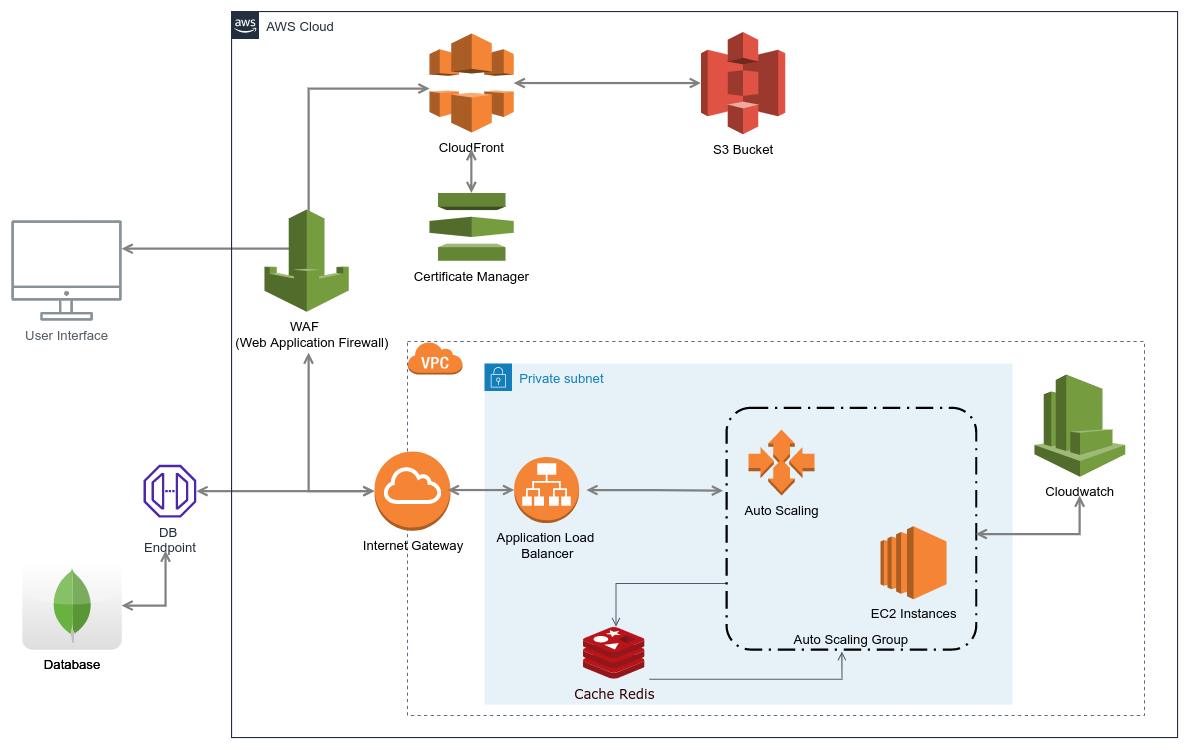Migrating to a Scalable and Robust AWS ArchitectureIn the fast-paced world of modern software development
Introduction
Every tech journey starts with a simple, functional solution. Over time, as user demands grow and the complexity of applications increases, the need for a more robust and scalable architecture becomes evident. This journey narrates our experience transitioning from a basic AWS architecture for one of our clients to a sophisticated, scalable, and secure setup, highlighting the challenges we encountered and the solutions we achieved.
Existing Architecture: The Starting Point
Overview:
Looking at the existing architecture which was simple and straightforward configuration designed for simplicity:
- Content Delivery: Amazon CloudFront distributes static content from an S3 bucket, ensuring quick access for users globally.
- AWS Certificate Manager provides SSL/TLS certificates for secure communication.
- Compute and Network: A single EC2 instance within a public subnet of a VPC, accessible via a public IP.
- Database Connectivity: The EC2 instance connects directly to a MongoDB database.
- Internet Access: An Internet Gateway enables communication between the VPC and the internet
Challenges with Existing Architecture :
- Scalability Issues: A single EC2 instance limits our ability to handle increased traffic and load, leading to potential performance bottlenecks.
- Security Concerns: Hosting the application server in a public subnet exposes it to a higher risk of attacks.
- Performance Limitations: Direct database connections and lack of caching can cause latency, affecting user experience.
- No Redundancy: The absence of load balancing and auto-scaling results in a lack of fault tolerance and high availability.
Proposed Architecture: The Vision for Growth
Overview:
- Our proposed architecture introduces several advanced features aimed at addressing the limitations of the current setup:

- Dynamic Scaling: Auto-scaling of EC2 instances within a private subnet , managed by an Auto Scaling Group.
- Traffic Management: AnApplication Load Balancer (ALB) distributes incoming traffic across multiple instances.
- Enhanced Security: A Web Application Firewall (WAF) protects against common web exploits, and instances are housed in a private subnet for added security.
- Performance Optimization: Integration of a Redis cache to reduce latency and improve data retrieval speeds.
- Monitoring and Logging: CloudWatch monitors application performance and logs system activity.
Benefits of this architecture:
Overview:
- Scalability: Auto-scaling and load balancing enable the system to handle varying traffic loads efficiently.
- Security: Improved network security with the use of private subnets and a WAF.
- Performance: Caching mechanisms and load balancing enhance application responsiveness.
- Reliability: The architecture supports fault tolerance and high availability through redundancy and monitoring.
Conclusion
- The migration to new architecture marks a significant milestone in our journey towards building a scalable, secure, and high-performance cloud infrastructure. The challenges faced during this transition provided valuable insights and reinforced the importance of careful planning, testing, and optimization.
- As we continue to evolve, we remain committed to leveraging cutting-edge technologies and best practices to deliver exceptional user experiences and maintain our competitive edge in the dynamic tech landscape.
Feel free to reach out if you have any questions or need more details about our migration process or the architecture itself.